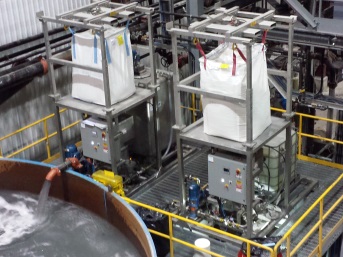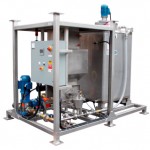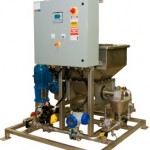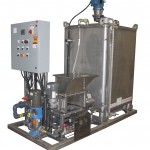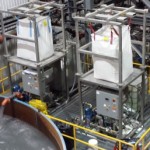Remember this when buying a dry polymer system!
“You get what you pay for”
Not all dry polymer systems are equal; over the years we have seen and heard from polymer equipment suppliers making claims and promises of their systems performance and unique wetting capabilities that are in fact, “overstated”. There are certain parameters that must be addressed before the selection of a dry polymer system is determined. Water temperature and quality (hardness & alkalinity) have a very definite effect on the wetting process, lower temperatures below 10-15° C can take as long as 3 hours to completely hydrate and reach maximum viscosity (assumed 0.5%) ratio. Conversely temperature of supply water in industrial applications may be well over 30°C which present a different set of consequences. Location of the equipment installation, storage area of the dry material, atmosphere surrounding the equipment and high humidity issues must be considered.
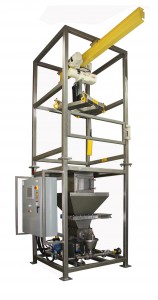 Polymer types, Anionic, Cationic and Non-Ionic powders all wet and hydrate differently, particle mesh/micron size may vary from one product to another and will affect the length of time the beads or particles completely hydrate or reaches maximum viscosity. The statements made by equipment suppliers often use best case scenarios when publishing their claims, which can result in higher polymer usage and poor application performance, if those conditions are not met.
Polymer types, Anionic, Cationic and Non-Ionic powders all wet and hydrate differently, particle mesh/micron size may vary from one product to another and will affect the length of time the beads or particles completely hydrate or reaches maximum viscosity. The statements made by equipment suppliers often use best case scenarios when publishing their claims, which can result in higher polymer usage and poor application performance, if those conditions are not met.
Claims of hydrating polymer in excess of 2.0% are more often exaggerated; generally most conventional wetting systems are capable of effectively hydrating polymer at concentrations at or below 0.75%. Viscosity will become a consideration when these concentrations are achieved.
Safety is one of the most overlooked aspects of polymer equipment design. Dust (fines), polymer leakage, slip hazards, accessibility to components, bulk bag support systems, access to bag tie straps, hopper screens, overflow protection, pressure indication, pressure relief and check valves, must be addressed and accounted for. Potential buyers of polymer systems need to evaluate the critical safety implications before deciding on a supplier or brand.
Maintenance is always an issue with dry polymer systems, trying to clean polymer from any surface is not easy, it’s particularly difficult once the polymer has been wetted, allowed to dry and then harden. Systems that offer additional protection to prevent the buildup of polymer at the discharge of the screw feeder will reduce the ongoing maintenance often seen in this area; full or partial vacuum conveying is an excellent solution to these problems. Optional maintenance reducing items include; powder drop trays, dust collection systems, hermetically sealed hopper/feeder isolation, quality monitoring and alarm devices and most of all proper operator training and awareness.
System Sizing, is the most common cause of poor polymer performance, tanks, agitators (recommended speed <100 rpm, low shear propellers), line sizes, water supply and feeder output must be adequately matched, to ensure all your polymer is properly and completely mixed, if any one of these parameters are deficient you will incur a decrease in polymer performance and an increase in cost. Do not expect good results if you under-size a system to fit in a confined or pre-determined space, we have seen this many times in the past with less than stellar results.
The Bottom Line, when considering the purchase of a Dry Polymer System, ensure the items and issues indicated above become a significant part of your purchasing decision. Review the safety, robust construction, excellent wetting capability, access to components and the quality of the technical know-how and support of your supplier.
For more detailed information please call our experienced staff at 905-847-1544.
